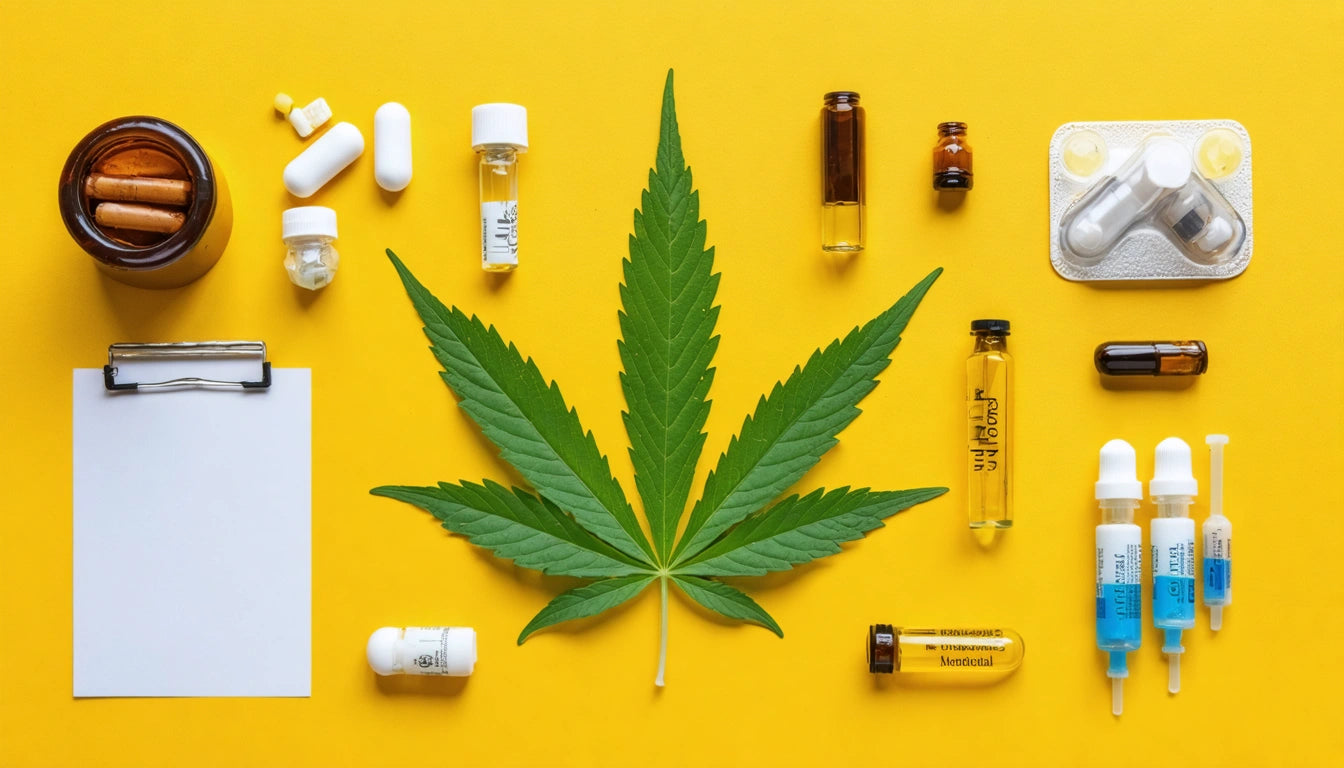Table of Contents
Understanding the Uses and Benefits of Medical Marijuana
Medical marijuana represents a significant shift in how we approach treatment for various health conditions. As legislation evolves across the United States and globally, understanding what medical marijuana is used for and its potential benefits becomes increasingly important for patients and healthcare providers alike.
What Is Medical Marijuana?
Medical marijuana refers to using the whole cannabis plant or its extracts to treat symptoms of illness and other conditions. Unlike recreational cannabis, medical marijuana is prescribed by physicians for specific medical purposes. The plant contains over 100 cannabinoids, with THC (tetrahydrocannabinol) and CBD (cannabidiol) being the most studied for their therapeutic properties.
According to research on marijuana composition, these compounds interact with the body's endocannabinoid system, which plays a role in regulating pain, mood, appetite, and memory. This interaction forms the basis for many of the medical applications of cannabis.
Medical Conditions Treated with Cannabis
The range of conditions for which medical marijuana is prescribed continues to expand as research progresses. Some of the most common medical reasons for cannabis use include:
- Chronic pain management
- Nausea and vomiting from chemotherapy
- Muscle spasms from multiple sclerosis
- Seizure disorders, including epilepsy
- Sleep disorders
- Anxiety and PTSD
- Appetite stimulation for HIV/AIDS patients
- Inflammatory conditions
These applications are supported by qualifying conditions guidelines that vary by state but generally recognize these therapeutic uses.
Pain Management
One of the most common reasons patients seek medical cannabis is for pain relief. Studies suggest that cannabinoids may be effective for treating certain types of chronic pain, particularly neuropathic pain that doesn't respond well to conventional treatments.
Mental Health Applications
For conditions like PTSD, anxiety, and depression, some patients report significant benefits from medical marijuana. However, it's important to note that effects can vary, and for some individuals, particularly those predisposed to psychosis, cannabis may exacerbate symptoms.
FDA-Approved Applications
While many states have approved medical marijuana for various conditions, the FDA has approved only a limited number of cannabis-derived medications:
- Epidiolex (cannabidiol) for certain forms of epilepsy
- Marinol and Syndros (dronabinol) for nausea from chemotherapy and appetite stimulation in AIDS patients
- Cesamet (nabilone) for chemotherapy-induced nausea and vomiting
These medications have undergone rigorous clinical trials to establish their safety and efficacy, unlike many cannabis products available in state-legal dispensaries. The distinction between medical and recreational marijuana includes these regulatory differences.
How Medical Marijuana Works in the Body
Medical cannabis functions primarily through the endocannabinoid system, a complex cell-signaling system identified in the early 1990s. This system plays a role in regulating a range of functions including sleep, mood, appetite, memory, reproduction, and fertility.
THC binds to cannabinoid receptors (CB1 and CB2) throughout the body, producing various effects including pain reduction, muscle relaxation, and increased appetite. CBD doesn't bind directly to these receptors but influences them indirectly while also affecting other receptor systems that regulate inflammation, pain perception, and anxiety.
For patients wondering how medical marijuana works, this interaction explains why cannabis can address such a wide range of symptoms and conditions, as detailed in this overview of cannabis mechanisms.
Consumption Methods for Medical Cannabis
How medical marijuana is used varies depending on the condition being treated and patient preferences. Common consumption methods include:
- Inhalation (smoking or vaporizing)
- Oral ingestion (edibles, tinctures, capsules)
- Topical application (creams, balms)
- Sublingual administration (oils, sprays)
- Pre-rolled joints (often with specific medicinal strains)
For patients seeking convenient, precisely dosed options, pre-rolled products with consistent dosing can offer a solution that eliminates the need for measuring or preparation.
Each method offers different onset times, duration of effects, and bioavailability, making certain approaches more suitable for specific conditions. For example, inhalation provides rapid relief for acute symptoms, while edibles offer longer-lasting effects beneficial for sleep disorders or chronic pain.
Obtaining Medical Marijuana
Access to medical marijuana requires following state-specific procedures, typically involving:
- Consulting with a qualified healthcare provider
- Obtaining a medical marijuana recommendation or certification
- Registering with the state's medical marijuana program
- Receiving a medical marijuana card
- Purchasing from licensed dispensaries
The benefits of having a medical marijuana card often include legal protection, tax advantages, higher potency limits, and sometimes lower costs, as explained in this guide on medical marijuana cards.
Research Advancements and Future Medical Applications
The medical cannabis field continues to evolve rapidly. Ongoing research is exploring potential applications for conditions including Alzheimer's disease, Parkinson's disease, and various autoimmune disorders. Scientists are also investigating the entourage effect, where multiple cannabis compounds work together to enhance therapeutic benefits.
Recent studies have begun examining what doctors are learning about marijuana and surgery, including potential benefits for pain management and reduced opioid use post-operation. As research advances, we can expect more targeted cannabis-based medications and treatment protocols tailored to specific conditions.
The economic and health benefits of cannabis extend beyond individual patient outcomes to potential healthcare cost savings and reduced pharmaceutical dependence.
As medical marijuana continues to gain acceptance in healthcare settings, patient education and responsible use guidelines will remain essential components of effective treatment programs. With ongoing research and evolving regulations, medical cannabis shows promise as a valuable addition to the therapeutic toolkit for many conditions.











Leave a comment
All comments are moderated before being published.
This site is protected by hCaptcha and the hCaptcha Privacy Policy and Terms of Service apply.